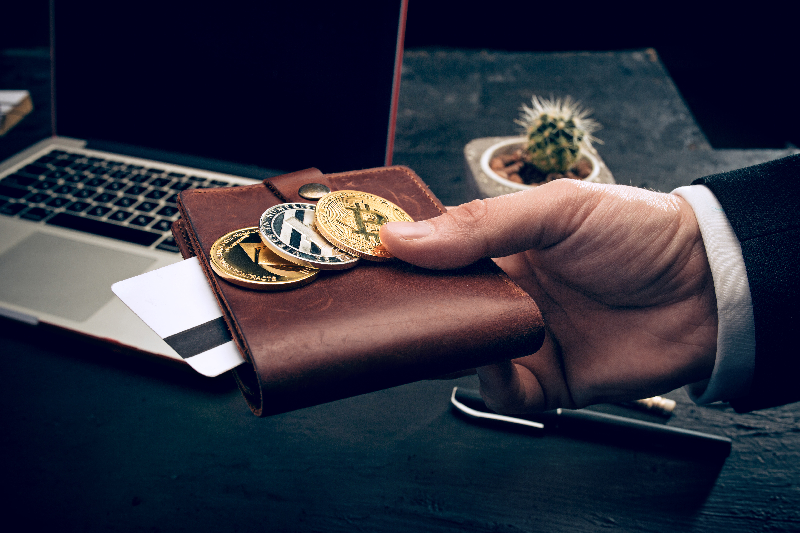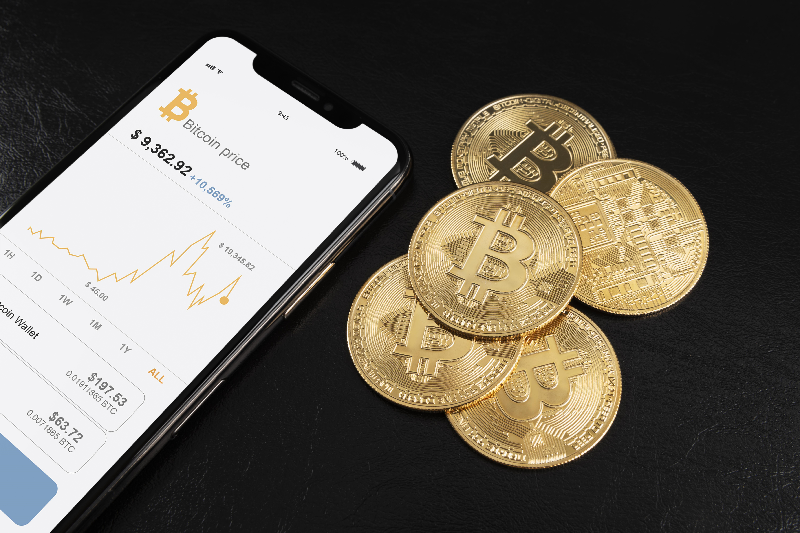Bitcoin was the first cryptocurrency, outlined in principle by Satoshi Nakamoto in 2008. The paper was titled “Bitcoin: A Peer-to-Peer Electronic Cash System.” describing the project as “an electronic payment system based on cryptographic proof instead of trust.”
Cryptocurrency is a peer-to-peer digital payment system that does not rely on banks to verify transactions, it allows anyone anywhere to send and receive payments. Cryptocurrency payment exists digitally with every entry tied to an online database, describing the transaction, unlike physical money being carried around and exchanged. Transactions are recorded in a public ledger when cryptocurrency funds are being transferred. You can use crypto to buy regular goods and services, although most people invest in cryptocurrencies as they would in other assets, like stocks or precious metals.
Some of the more popular cryptocurrencies include:
- Bitcoin
- Ethereum
- Litecoin
- Ripple
- Dogecoin
How does Cryptocurrency work?

Cryptocurrencies are not tangible. What you own is a key that allows you to move a record or a unit of measure from one person to another without a trusted third party. Blockchain is a distributed public ledger that cryptocurrencies run on. It is a record of all transactions updated and held by currency holders.
Units of cryptocurrency are created through mining, which uses computing power to solve complicated mathematical problems that generate coins. Alternatively, it is also possible to purchase currencies from brokers, then store and spend them using cryptographic wallets.
How can you mine Cryptocurrency?

Mining is how new units of cryptocurrencies are introduced into the world. While it is possible for the average person to mine cryptocurrency, it has become increasingly difficult. The average person used to be able to mine, but as the network grows, mining requires more and more processing power.
It is estimated that 0.21% of all of the world’s electricity goes to powering Bitcoin farms. That is the amount of power Switzerland uses in a year. It is estimated that Bitcoin miners use 60% to 80% of what they have earned from mining to pay for electricity.
How can you store Cryptocurrency?

#1 Hot wallet storage
If you regularly trade crypto or spend crypto to make everyday purchases, you want to store your digital currency in a hot wallet. Hot wallets are connected to the internet, making it easier if you want to seamlessly make crypto transactions within a few clicks.
There are, however, a few leading exchanges that chose to store their users’ large funds in cold storage for security. While hot wallets are good for their ease of use, security can be a problem as it exposes you to cyber theft. Therefore, hot wallets are recommended for small amounts of crypto.
#2 Cold wallet storage
Cold wallets are not connected to the internet. You only connect your cold wallet to the internet when you want to make a transaction, making it a more secure way to store your crypto. Hardware wallets are usually the more popular option as they are easy to use and come with customer support from the manufacturer. It is typically in the shape of a USB drive, making them harder to access by hackers.
To store crypto in a hardware wallet, you send your crypto from a hot wallet to the hardware wallet’s address. When you want to exchange or transfer your crypto, you will have to connect the hardware wallet to the internet via software and sign it with your private key.
While cold wallets provide a superior storage solution in terms of security, the main drawback is that they are impractical for everyday usage as it can be a hassle to send crypto from a cold wallet.
How can you invest in Cryptocurrencies safely?

#1 Do your research
There are over hundreds of exchanges to choose from so it is important to learn about cryptocurrency exchanges and do your research through reading reviews and talking to experienced investors.
#2 Know where and how to store your cryptocurrencies
Asides from the exchanges, your storage method is another thing for you to decide. Every wallet has its own benefits and security. Hence, it is only wise to investigate the storage choices you have before committing to the investment.
#3 Diversify your investments
Diversifying your investments is key to a good strategy. It is crucial that you do not put all your money in just 1 investment. For example, Bitcoin, just because that is a name you know. There are thousands of options in cryptocurrencies, it is recommended that you spread your money across several currencies.
#4 Be prepared for ups and downs
The market is highly volatile, there will be dramatic swings in prices and the prices are highly speculative. However, investing in something new is always challenging, so start conservatively and do your research before participating.
In Conclusion
Investments always come with a risk. Cryptocurrencies are something that even experts hold mixed opinions about. This is why it is important to not just rely on internet trends, any investor should research before investing. If you are particularly interested in cryptocurrency, you can opt to invest a small amount of your portfolio that you are willing to lose in case your investment goes south. Let us make educated choices before investing.
At Aventis, we provide digital transformation workshops. Come meet our industry expert, Mr Alvin Lam for the following course:
Blockchain and Cryptocurrency: What You Need to Know (Virtual)
Discounts are available when you sign up in groups of 3 or more! Feel free to reach out to Ms Germaine at 6720 3333 for more details!
Sources

